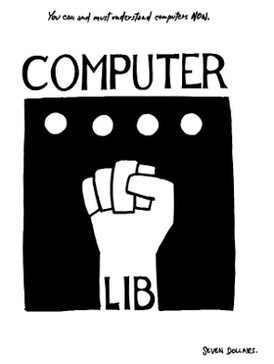The internet’s disruptiveness is a consequence of its technical DNA. In programmers’ parlance, it’s a feature, not a bug – i.e. an intentional facility, not a mistake. And it’s difficult to see how we could disable the network’s facility for generating unpleasant surprises without also disabling the other forms of creativity it engenders. — John Naughton (2010)
My connected courses this semester have been full of unpleasant surprises of the technical kind. Many people of good will have tried to help coax overloaded servers back to the front lines. But without a warp drive we are all left peddling along.
Faster Captian Picard, faster!

Taking control would make things easier: We should lock down that platform, kick out those unruly widgets, limit the size, shape, and format of the content — for the sake of stability, for the sake of control, for the sake of the greater good. Right? Resistance is futile, right?

Not so slow!!!! Let’s not take away the flexibility that enables the creativity as well as the unpleasant surprises. Instead, let’s fix the warp drive so the Enterprise-internet can do what we made it to do, and what we do with it every time we engage it.
This nugget from John Naughton’s piece “Everything you need to know about the internet” highlights the yin and yang of creative disruption. In the seventies Vint Cerf and Robert Kahn sought to design a future-proof system that would link networks simply and seamlessly. They did that by setting up a decentralized net where no one person or entity has ownership or control and by embedding “neutrality” in the core architecture of the system. The network is simple in that it moves data packets from point to point. But it is neutral as to the content of those packets. So the same features that facilitate so many unpleasant surprises (malware, cyber stalking, incompatibilities) support the amazing, invigorating good stuff that brings us together and makes us smarter (communication, creation, augmentation, innovation).
Fencing off a little corner of the net as a kind of sandbox for students is a natural impulse. Locking things down will keep us safe, make things more efficient, and short circuit the frustration. But natural as it is, the impulse to exercise this kind of control thwarts the simple, empowering, free-range qualities that make the net the net and make the web a wonderfully flexible communication medium. The safe, impulse-drive installation would limit the unpleasant surprises, but it would also hamstring the creative potential that brings us here in the first place.
The disruption can be negative or positive, but it is embedded in the net’s DNA. Fiddling with that disruptive capability undercuts the whole enterprise. Disruption is a feature, not a bug.
I need to understand that feature better in order to deal with the unpleasant surprises and cultivate more pleasant surprises. I need to take Ted Nelson’s injunction to heart:

“Computer Lib cover by Ted Nelson 1974” by Ted Nelson – The New Media Reader (2003), page 302. Licensed under Fair use via Wikipedia.
Because creativity requires facility, disruption enables innovation, and bugs in a web can be beautiful.

Oh, had I a golden thread
And a needle so fine
I’d weave a magic strand
Of rainbow design…..
